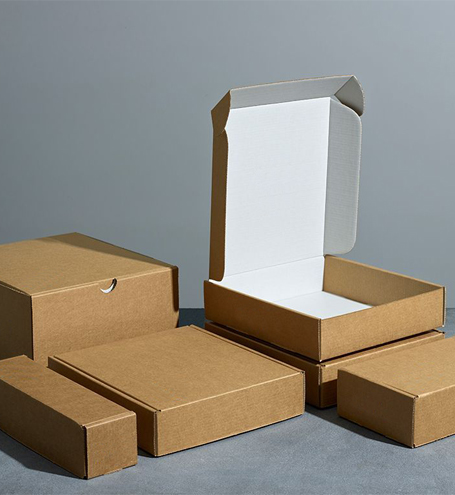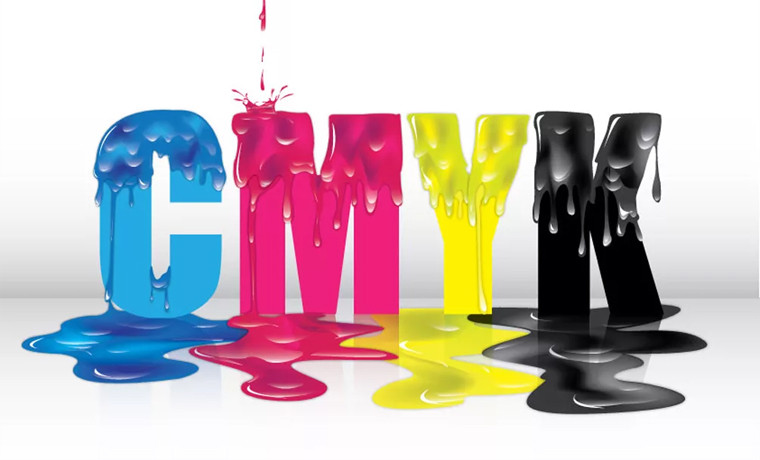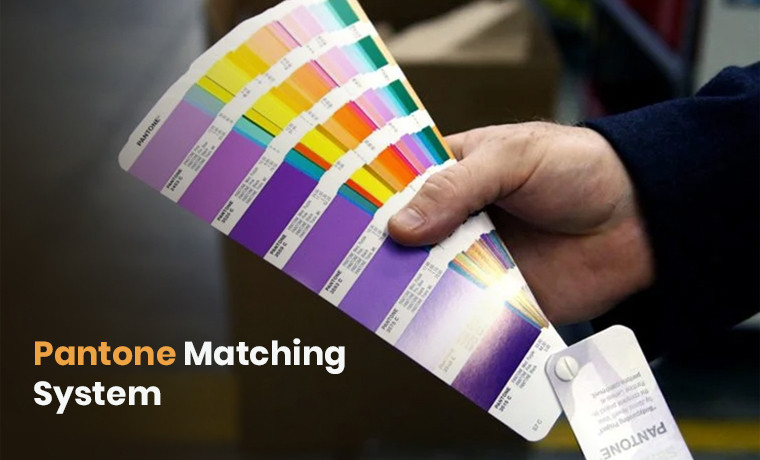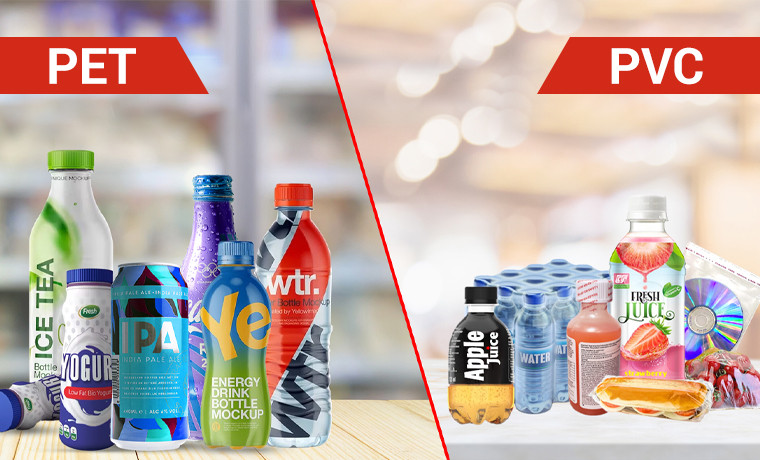A Guide to 12 Popular Types of Paper with Best Use Cases
September 05, 2025
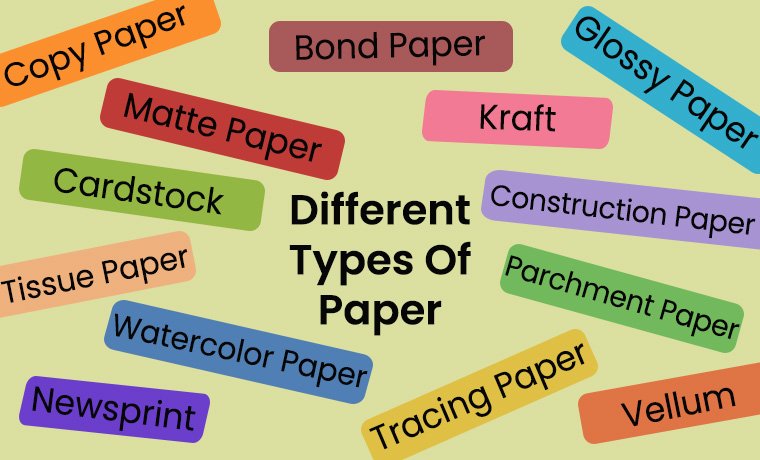
Have you ever wondered how many types of paper exist and what they’re used for? From everyday printing to artistic projects and business packaging, the right type of paper can make a big impact.
Paper, primarily made from natural wood pulp, is one of the most widely used materials in the world. In fact, the global pulp and paper market was valued at $351.53 billion in 2021 and is projected to reach $373 billion by 2029.
The paper market is growing rapidly. Interesting! But how many types of paper are there? Let’s delve into this.
This guide will explore the 12 most common types of paper for printing, their properties, and ideal uses, to help you choose the right one for your project or business.
1. Copy Paper
Copy paper is a standard white paper used for everyday printing and photocopying in homes, offices, and schools. It typically comes in the following sizes:
- Letter: 8.5" x 11" (216 x 279 mm)
- Legal: 8.5" x 14" (216 x 356 mm)
- Tabloid (Ledger): 11" × 17" (279 x 432 mm)
A standard ream (500 sheets) of A4 copy paper weighs approximately 5 pounds. Copy paper typically has a brightness rating between 90 and 100, offering a clean and readable white surface and providing good legibility for everyday printing. It is available in matte, glossy, and satin finishes.
Copy Paper Vs Printer Paper
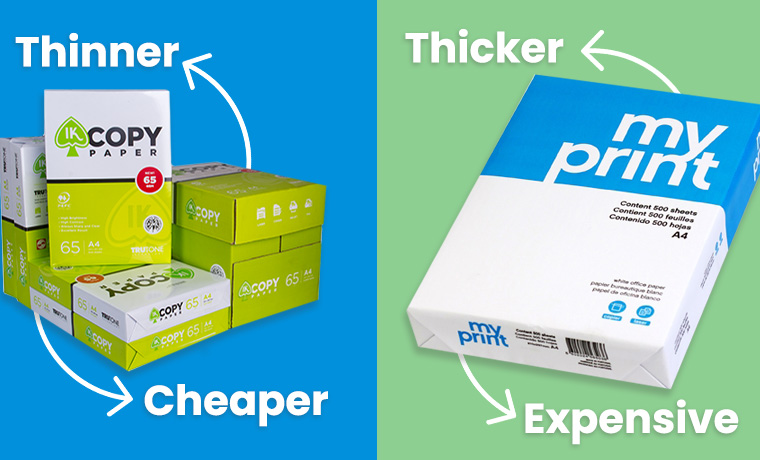
Both copy paper and printer paper are part of printing. There are key differences between them.
Copy paper is inexpensive, slightly thinner, and weighs around 20 pounds. It has a little low-quality brightness level and finish. However, it is suitable for printing text without images.
On the other hand, printer paper is thicker, more expensive, and heavier. It weighs 24 pounds with a smooth finish and a higher brightness level. Furthermore, it works best when you are ready to print text with images, documents, presentations, and reports.
| Features | Copy Paper | Printer Paper |
| Thickness | Thinner and lighter | Thicker and heavier |
| Weight | 20 pounds | 24 pounds |
| Finish | Basic or matte finish | Smoother and brighter finish |
| Brightness | Medium, slightly lower | Higher quality |
| Cost | Less expensive | More expensive |
| Best for | Printing text documents, notes, and drafts | Printing presentations, reports, and text with images |
2. Bond Paper
Bond paper is a durable and higher-quality writing paper used for printing. The standard bond paper weight ranges from 16 pounds to 36 pounds. A ream of bond paper, sized 17” x 22”, consists of 500 sheets and weighs 20 pounds. This ink-resistant white bond paper has a smoother finish and a clean surface for writing and printing.
It is found in different shades of colors. To give a touch of elegance, pastel shades of bond paper, including pink, blue, green, yellow, and peach colors, are good. Bright-colored bond paper is found in red, orange, and purple. This bond paper is also available in ivory and cream.
This paper prints letterheads, envelopes, business cards, stationery, legal documents, certificates, and notes. They are suitable for printing out emails and storing them as a record.
Additionally, it can be printed with a watermark and textured design. Among other types of papers to write and print, an ideal option is bond paper.
3. Glossy Paper

Glossy paper coated with a glossy finish has a smooth, shiny, and even surface. It offers a vibrant and reflective appearance, especially when you print high-quality images or photographs.
The glossy paper weight ranges are different. It ranges from 70 GSM and can be above 300 GSM (grams per square meter). This makes glossy paper sturdier than printer paper and prevents it from curling or bending.
The durability with water and fading-resistant properties of glossy paper have made it a popular choice for personal and professional usage. Therefore, it is suitable for printing magazines, brochures, and advertising materials.
4. Matte Paper
Matte paper, known as non-glossy paper, does not possess a shiny and reflective surface but offers a smooth finish that gives it a more natural appearance.
This durable matte paper is designed to absorb ink well to produce higher-quality prints with rich colors, and its durability withstands smudging, fading, water, and footprints.
The weight of matte paper depends on its requirements. For a text document, you need lightweight matte paper. However, for printing photographs, you need heavier matte paper.
Most commonly, it is used for printing business documents, photographic prints, notebooks, journals, invitations, and greeting cards.
5. Cardstock
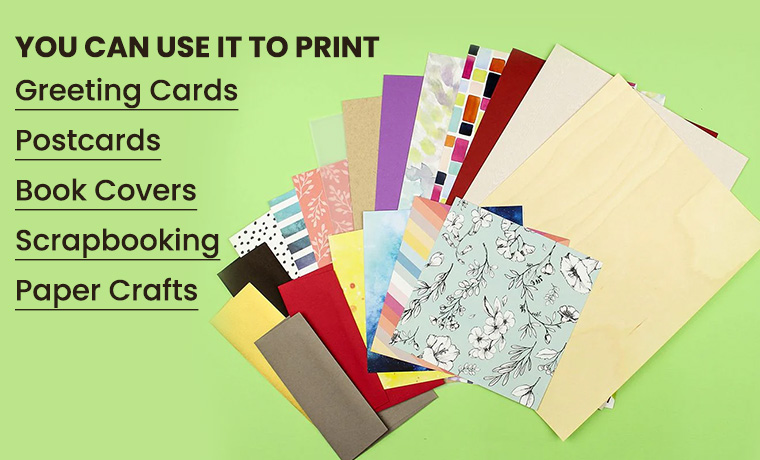
You can find sustainable cardstock paper made from natural resources in various colors, sizes, and weights. Its flexibility allows you to fold it without hassle. Usually, it is discovered in white, black, pastels, and bright colors.
Cardstock provides rigidity. It is more durable, heavier, and thicker than normal paper. Moreover, it is more flexible than cardboard. You can encounter its thicknesses ranging from 147 GSM to 640 GSM, and it is resistant to tearing and bending. The thicker the cardstock, the stronger it is.
Cardstock is compatible with both types of printers (inkjet or laser printer). No matter if you print textures, colors, and finishes such as gloss and matte on this paper. Not to worry, it works best.
The cardstock thickness, wide color range, and shapes allow it to be used in creative and customized projects. If you need a more professional and premium look for your project, say yes to cardstock paper.
You can use it to print greeting cards, business cards, custom postcards, scrapbooking, paper crafts, book covers, packaging, and DIY projects.
6. Construction Paper
Construction paper is a thick and colored paper that has a slightly rough surface. It is designed for children and adults to accomplish their arts and crafts projects.
This inexpensive paper stands out for its sturdiness, making it ideal for craft projects. Its sturdier structure allows you to cut and fold in any shape, which makes it a superb choice for creative DIY projects. You can use this paper for posters, book covers, and birthday or holiday greeting cards.
Read More: A Guide To Different Types of Packaging Materials and Their Uses
7. Watercolor Paper

Watercolor paper is specifically designed for watercolor painting. This paper is made from a blend of cotton that makes it durable to handle watercolor properties. In contrast to standard paper, watercolor paper is different as it can absorb water and color without tearing.
Hot-pressed watercolor paper is one of its types that offers a smooth surface. For a moderate surface, you can opt for cold-pressed watercolor paper. Lastly, rough textured watercolor paper is available for creating dramatic effects.
8. Newsprint
Newsprint is a cost-efficient and thin type of paper, considered the backbone of print media, as it is used in newspapers and magazines. This paper is unbleached and produced in low quality, which is why it becomes greyish or yellowish over time, as it is non-archival-quality.
The print media industry uses this lighter paper in the offset printing press to print large quantities of newspapers and magazines. People can also use this paper as wrapping paper when they are done reading.
Using this low-quality paper, combined with the printing process, media houses print photographs and pictures in newspapers, magazines, and other publications.
9. Parchment Paper
Parchment paper, also known as baking paper, is used in the kitchen. It is made from wood pulp coated with silicon to make it grease-proof, moisture-resistant, and heat-resistant.
Its non-stick surface is good for rolling out dough and prevents food from sticking to the countertop. You can use it for many purposes and applications such as lining baking sheets, wrapping meat or fish for steaming, and food preparation.
10. Vellum
Vellum is similar to tracing paper and has a smooth texture and translucent surface. Looking back into its history unlocks this secret when it was first made from calfskin in Egypt in 3000 BC and used in writing and printing in the past.
Today, this durable and versatile vellum paper is made with a blend of cotton and synthetic fibers. Being thicker than standard paper, this paper comes in various colors, weights, and textures.
If you want to add a touch of elegance and sophistication to your product packaging and custom boxes, this modern vellum paper is an excellent choice. The reason why? It is ideal for drawing, sketching, calligraphy, gift tags, creative DIY projects, and stationery.
11. Tracing Paper
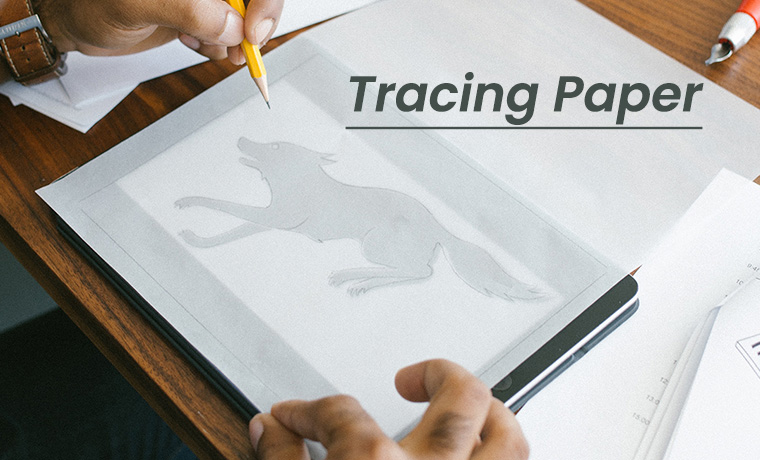
Tracing paper is super thin, translucent, and low-capacity paper that was first produced in the 19th century. This versatile and highly transparent paper has a smooth surface and comes in different weights (from lightweight to heavyweight). It is designed to accept and trace drawings, designs, engineering plans, and overlays.
The velvety surface of this paper allows trace and transfer designs that can help children in school trace images, sketches, shapes, and practice letters.
12. Tissue Paper
Tissue paper is a lightweight and smooth paper known for its soft texture and absorbent properties. Its absorbency allows you to clean spills or wipe tears.
Some types of tissue paper are facial tissue paper, toilet tissue paper, tissue paper rolls, and decorative tissue paper. Further, they reduce environmental impact as they are made from recyclable materials.
You can discover them in various colors, including white, green, pink, and many other colors. They can be used for gift wrapping, cleaning, personal care, crafting, decorating, and packaging fragile items.
Final Words
Hopefully, you will gain a deep understanding of the various types of papers from this guide. Given paper size, thickness, colors, printing, and the right choice of paper type can make a big difference. If you’re looking for custom packaging solutions, Custom Product Packaging team is here to help you choose the perfect paper type—reach out to us anytime. Get in touch with us by emailing orders@customproductpackaging.com. We will be obliged to serve our clients by offering them customized packaging at economical rates without charging anything for shipping.
